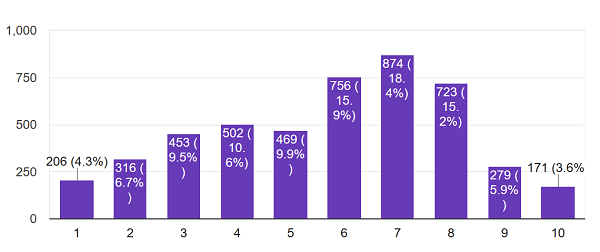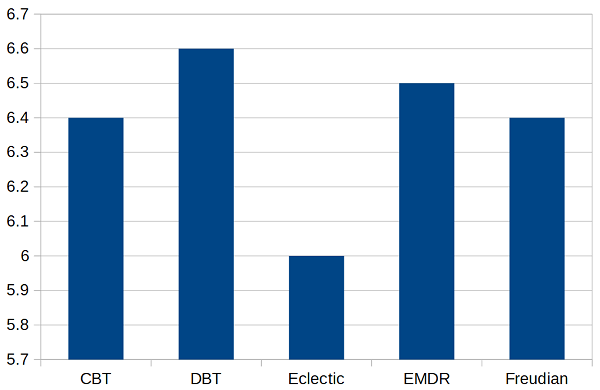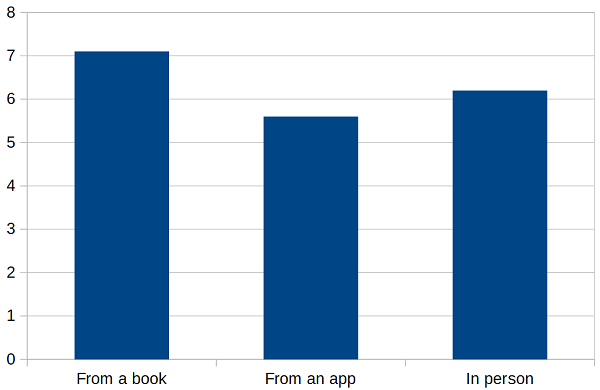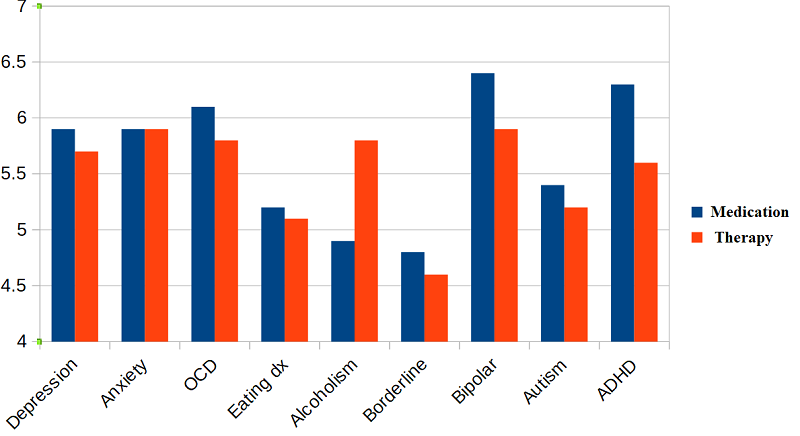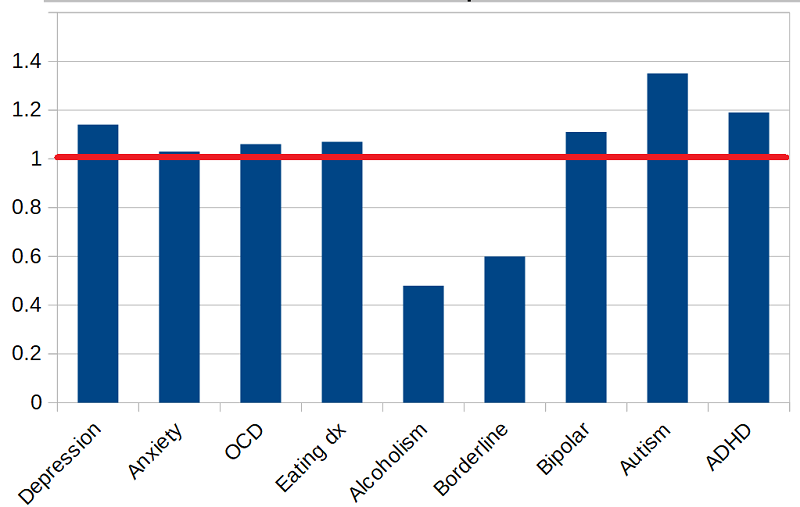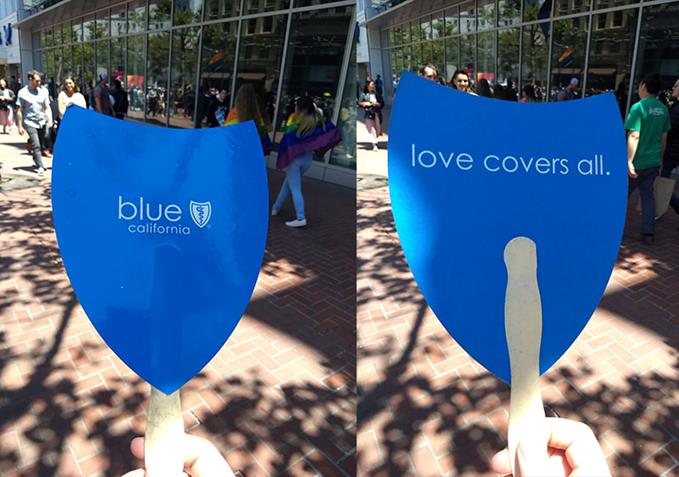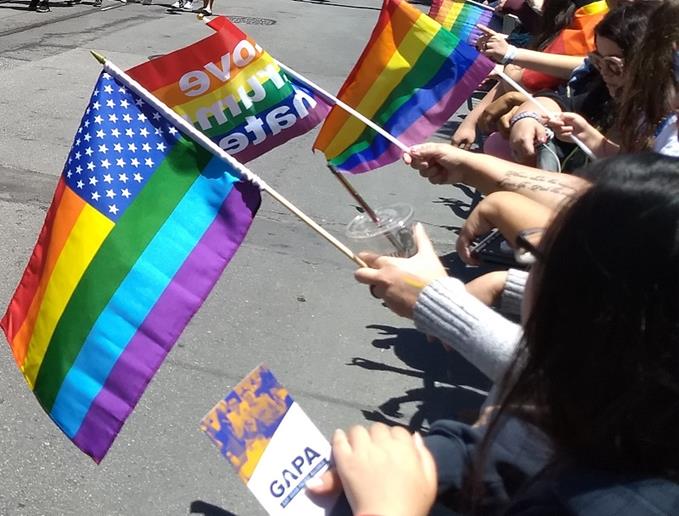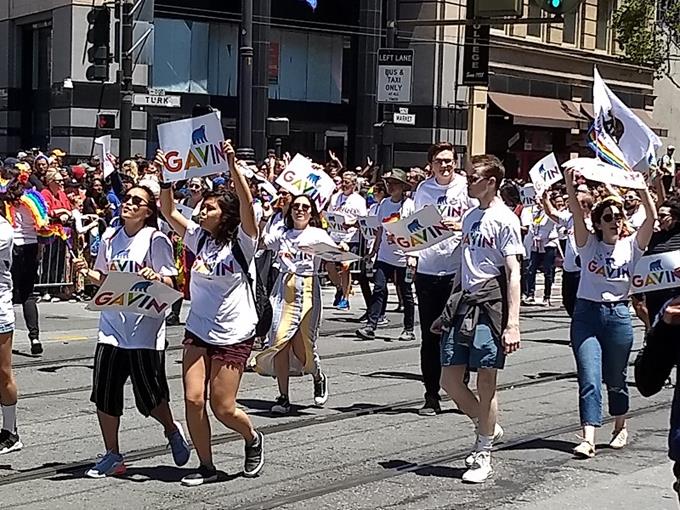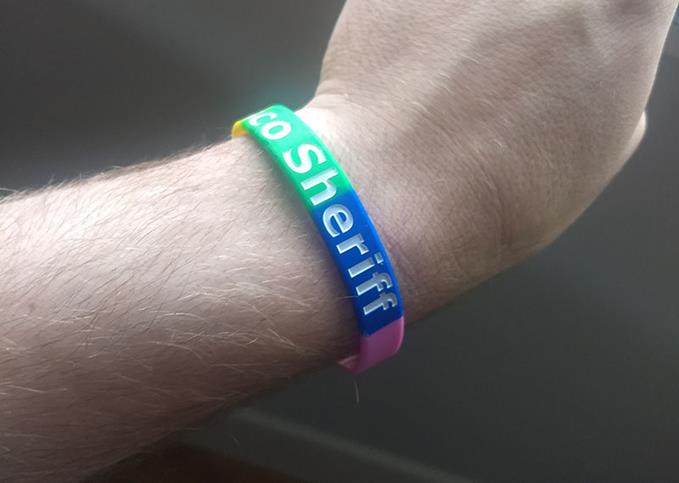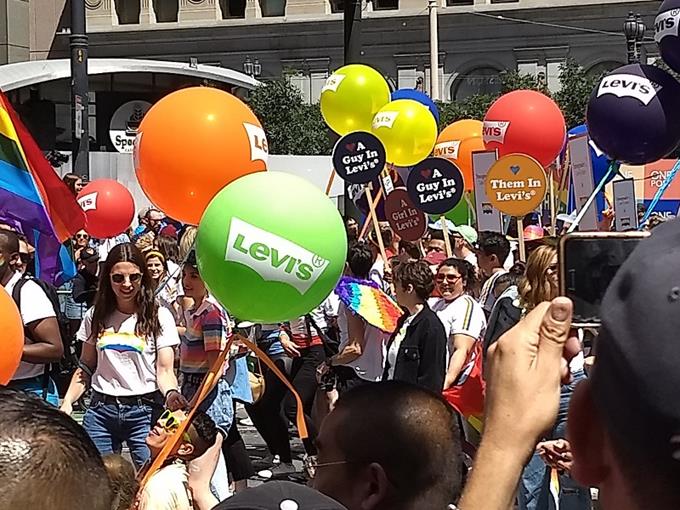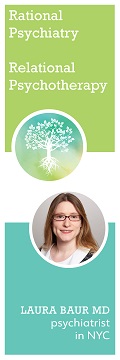Ken Kesey, graduating college in Oregon with several wrestling championships and a creative writing degree, made a classic mistake: he moved to the San Francisco Bay Area to find himself. He rented a house in Palo Alto (this was the 1950s, when normal people could have houses in Palo Alto) and settled down to write the Great American Novel.
To make ends meet, he got a job as an orderly at the local psych hospital. He also ran across some nice people called “MKULTRA” who offered him extra money to test chemicals for them. As time went by, he found himself more and more disillusioned with the hospital job, finding his employers clueless and abusive. But the MKULTRA job was going great! In particular, one of the chemicals, “LSD”, really helped get his creative juices flowing. He leveraged all of this into his Great American Novel, One Flew Over The Cuckoo’s Nest, and became rich and famous overnight.
He got his hands on some extra LSD and started distributing it among his social scene – a mix of writers, Stanford graduate students, and aimless upper-class twenty-somethings. They all agreed: something interesting was going on here. Word spread. 1960 San Francisco was already heavily enriched for creative people who would go on to shape intellectual history; Kesey’s friend group attracted the creme of this creme. Allan Ginsberg, Hunter S. Thompson, and Wavy Gravy passed through; so did Neil Cassady (“Dean Moriarty”) Jack Keroauc’s muse from On The Road. Kesey hired a local kid and his garage band to play music at his acid parties; thus began the career of Jerry Garcia and the Grateful Dead.
Sometime in the early 1960s, too slow to notice right away, they transitioned from “social circle” to “cult”. Kesey bought a compound in the redwood forests of the Santa Cruz Mountains, an hour’s drive from SF. Beatniks, proto-hippies, and other seekers – especially really attractive women – found their way there and didn’t leave. Kesey and his band, now calling themselves “the Merry Pranksters”, accepted all comers. They passed the days making psychedelic art (realistically: spraypainting redwood trees Day-Glo yellow), and the nights taking LSD in massive group therapy sessions that melted away psychic trauma and the chains of society and revealed the true selves buried beneath (realistically: sitting around in a circle while people said how they felt about each other).
What were Kesey’s teachings? Wrong question – what are anyone’s teachings? What were Jesus’ teachings? If you really want, you can look in the Bible and find some of them, but they’re not important. Any religion’s teachings, enumerated bloodlessly, sound like a laundry list of how many gods there are and what prayers to say. The Merry Pranksters were about Kesey, just like the Apostles were about Jesus. Something about him attracted them, drew them in, passed into them like electricity. When he spoke, you might or might not remember his words, but you remembered that it was important, that Something had passed from him to you, that your life had meaning now. Would you expect a group of several dozen drug-addled intellectuals in a compound in a redwood forest to have some kind of divisions or uncertainty? They didn’t. Whenever something threatened to come up, Kesey would say —the exact right thing—-, and then everyone would realize they had been wrong to cause trouble.
But what were Kesey’s teachings? Oh, fine. He talked a lot about movies. Everyone had a movie. The cops had a cop movie, businessmen had a businessman movie, trauma victims had trauma victim movies. Everyone was just reading their script, doing what was expected of them. But with enough enlightenment (realistically: drugs), you could break out of other people’s movies – not just refusing to play the part they assigned you, but making them question the role they assigned themselves. You could rewrite your own movie, stop being an actor and take control of your own life. That woman in the picture, who put the flower in the barrel of the gun as the riot police stared her on: she was channeling Kesey. The riot police have their riot police movie, where you either back off or fight against them or do some other reasonable riot-police-related thing. If you can break out of that, just be yourself, your repetoire of possible actions expands to infinity.
There was some big New York celebration of Ken Kesey’s second novel. The Merry Pranksters decided to make a road trip out of it. They got a school bus, painted it in crazy psychedelic colors, set the destination plaque on the front to “Further”, and all crammed aboard. Neil Cassady took the wheel; everyone else got super high on drugs, dressed up in the craziest costumes they could think of, crowded around the windows and on the roof, and set out on a quest to deprogram everyone in middle America (realistically: shout at them and act crazy). For a five thousand mile round trip, they abused every drug known to man, had wild sex, played pranks (in Arizona, they pretended to be a campaign stunt for ultraconservative presidential candidate Barry Goldwater), and generally bonded. A couple of people predictably went psychotic and had to be let off at local mental hospitals, but as Kesey’s gnomic proverb went, “you’re either on the bus or off the bus”.
By the time they got back to their California compound, they had become legends. Various gurus and counterculture figures came to seek audiences with Kesey; they all left convinced that something had happened, even if they couldn’t put it into words. The Hell’s Angels, notorious for crashing hippie parties and then fucking everyone up, came to Kesey’s compound, and Kesey…somehow socially hacked them. They ended up behaving like perfect gentlemen the whole time, then left promising to play support for Kesey if he ever needed it. Kesey got invited to speak at a Unitarian meeting on the evolving counterculture. Somehow he…hacked…the Unitarians, so that all of the younger attendees (and some of the older ones) were following Keseyism and not Unitarianism by the end of the conference.
(you can make jokes about “what’s the difference?”, but I don’t know enough history to know if Unitarianism was its current ultraliberal hippieish self at the time, or how much of that is actually because of Kesey hacking their conference)
The Bay Area counterculture was going to unite for a giant anti-Vietnam rally. They were going to march on the military base! They were going to start a revolution! They invited Kesey as their speaker, and Kesey decided he would hack their movie. He repainted his bus in military camo, then covered it in swastikas. At the head of a literal battalion of military-uniformed, swastika-bearing Merry Pranksters, he marched onto stage and declared that protesting a war was much like fighting in a war, in the sense that either way you were playing the war movie. He was going to do something different. He was going to play “Home On The Range” on his harmonica on stage, for no reason, until the organizers forced him to stop. Which they couldn’t do, because he was surrounded by loyal cultists doing a pretty good army imitation. So in the midst of what was supposed to be the beginning of a violent revolution, a swastika-clad Kesey stood on stage and played “Home On The Range” on his harmonica, until everyone got confused and dispersed.
Energy started to build. Kesey couldn’t be stopped. His momentum was too strong. It was one thing after another. The Beatles started making clearly Kesey-inspired albums. All the hip people of San Francisco begged him to lead them, show them the way forward. Kesey obliged. He started holding a series of parties – first small, then gradually larger – called Acid Tests. Everyone would take LSD. But not just LSD. The LSD would be modulated, amplified a thousand times by every bit of technology and ingenuity the Merry Pranksters could dream up. Strobe lights, black lights, surround-sound, the true multimedia experience. Kesey had invented the rave. The Grateful Dead, now his official cult band, followed him everywhere. Owsley Stanley, a weird scientific prodigy who at one point was personally responsible for synthesizing the majority of the world’s LSD, became his audio guy, and invented large swathes of modern audio processing. They were doing things light-years beyond what anyone had done before, and they were doing it at scale: 6,000 people attended one 1966 Acid Test.
Finally, Caiaphas and the Pharisees decided they had seen enough. The police swooped down. LSD was legal at the time, but the Merry Pranksters were using so many other illegal drugs that it didn’t matter. Kesey was arrested on marijuana charges, potentially carrying a long prison sentence. He decided to do the same thing any reasonable person would: fake his suicide and flee to Mexico.
It went badly. The fake suicide was spotted almost immediately, because Kesey couldn’t resist writing an overly dramatic, slightly hilarious suicide note. Also, without Kesey’s stabilizing presence, the Merry Pranksters immediately fell to backstabbing and infighting. Kesey’s St. Peter figure, Ken Babbs, tried his hardest to hold everything together, but despite some victories (for example, inventing the concept of spiking Kool-Aid with LSD) it all collapsed. Everyone decided that life without Kesey wasn’t worth living, boarded their highly conspicuous psychedelic bus, and crossed the Mexican border to hunt him down. The police noticed this and sent their own agents to Mexico to hunt him down (what’s the Spanish for “did any of you see a bus painted bright rainbow colors full of screaming half-naked people pass through here recently?”). Also, somehow some hot hippie girls who were into Kesey managed to track him down, which did not bode well for his concealment from police. There followed a complicated Mexican manhunt which at one point involved Kesey jumping onto a moving train.
Finally Kesey realized: he’s in their movie. The cops-and-fugitive movie. He’s got to break out of that frame. So he dresses as a cowboy, gets on a horse, crosses the border back into America through some sort of cowboys-do-what-they-want exemption, and goes back to San Francisco. There he becomes the most public fugitive in the history of crime, speaking at various hippie events, attending various concerts, and giving interviews to the press – always disappearing just before the police arrived. His fame shoots past the stratosphere and into the Outer Empyrean.
Finally, inevitably, the police nab him. He’s still very rich from his Cuckoo’s Nest royalties, so he gets great lawyers who are able to bargain down to a minor marijuana charge. As icing on the cake, Kesey gives a speech. He says that, during his time in Mexico, he’s realized that it’s time to go “beyond LSD”. The judge is intrigued. During Kesey’s absence, hippiedom has grown from a small avante-garde to a giant movement, and become Public Enemy #1 in the eyes of the law. And here’s the Chief Hippie himself, saying what sort of sounds like “kids shouldn’t do drugs”. This is good enough for them! They let him out on bail for the one minor marijuana charge he still has going, on the condition that he preach his “beyond LSD” message to vulnerable youth.
(is it just me, or might the San Francisco legal system contain some of the stupidest people in the whole of human history?)
Kesey calls in all his favors. He rents one of the biggest concert halls in the Bay Area. He books the Grateful Dead. He calls forth the Hell’s Angels. He tells everyone – everyone to be there. He is going to tell them how to go beyond LSD and usher in the New Project. They are going to have the Acid Test Graduation, where the greatest Acid Test of all time transitions seamlessly into some grand post-LSD future that Kesey has planned.
Except – people like LSD. They like being hippies. They like taking drugs, then talking about how this is totally going to be the next stage of human evolution, man, if only the squares could see it. They like having sex with the torrent of hot women who are coming to the 1960s Bay Area to have sex with hippie guys. The famous hippie rock bands like being famous hippie rock bands. The wacky hippie philosophers like being wacky hippie philosophers. If Jesus Christ held a Second Coming in 1200 AD, and asked everyone to gather in Jerusalem for further instructions, would they go? Maybe the Pope likes being the Pope. Maybe bishops like being bishops. Maybe they don’t want to move to the next stage.
And so Kesey is betrayed. The Grateful Dead have another engagement. The concert hall is – oops – otherwise occupied. The financial backers are mysteriously low on cash. What should have been the crowning event of everything gets unceremoniously cancelled, “with no time left to start again”.
So Kesey says fuck it, he’ll do it all from an abandoned warehouse owned by the Pranksters. No music, no fancy lights, no crowds. Just whoever still holds the faith and wants to come and listen.
They come. Not everybody, but some people. The people who know. The hippest of the hip, the ones who haven’t abandoned the cause.
Kesey gets up on stage, faces all of them, and…
…just kind of rambles for an hour or two. Mumble mumble beyond LSD mumble. It doesn’t make a lot of sense.
Kenneth E. Kesey has lost the Mandate of Heaven. Maybe he left it in Mexico, during the chaos of flight. Maybe it got beaten out of him by the cops, or extracted from him in jail. Maybe it slunk away in shame when all his friends betrayed him. But it’s not there. It’s gone.
A few months later, he goes to trial on his minor marijuana charge. He gets six months in jail, about the usual punishment for a charge like that. He spends six months in jail. Then he moves back to Oregon. He lives there in relative obscurity for another thirty years, writing occasional short stories and giving occasional interviews to reporters and historians.
II.
There, I saved you from having to read Tom Wolfe’s The Electric Kool-Aid Acid Test.
Tom Wolfe is as famous as they get. And the book jacket claims that EKAAT “defined a generation”. I couldn’t stand it. Wolfe is trying to do some kind of experimental fiction where he portrays the Merry Pranksters in the style of an LSD trip. But I don’t want my nonfiction novels to have the style of an LSD trip. I want them to just tell me the piece of history they’re supposed to be about. Wolfe is a great writer, journalist, and historian. When he wants to, he can draw out exactly what’s so fascinating and amazing about this incredible piece of history. But in order to get to those moments, I have to read through prose like:
EXCEPT FOR HAGEN’S GIRL, THE BEAUTY WITCH. IT SEEMS LIKE she never even gets off the bus to cop a urination. She’s sitting back in the back of the bus with nothing on, just a blanket over her lap and her legs wedged back into the corner, her and her little bare breasts, silent, looking exceedingly witch-like. Is she on the bus or off the bus? She has taken to wearing nothing but the blanket and she sheds that when she feels like it. Maybe that is her thing and she is doing her thing and wailing with it and the bus barrels on off, heading for Houston, Texas, and she becomes Stark Naked in the great movie, one moment all conked out, but with her eyes open, staring, the next laughing and coming on, a lively Stark Naked, and they are all trying to just snap their fingers to it but now she is getting looks that have nothing to do with the fact that she has not a thing on, hell, big deal, but she is now waxing extremely freaking ESP. She keeps coming up to somebody who isn’t saying a goddamn thing and looking into his eyes with the all-embracing look of total acid understanding, our brains are one brain, so let’s visit, you and I, and she says: ‘Ooooooooh, you really thinkthat, I know what you mean, but do you-u-u-u-u-u-u-u- ueeeeeeeeeeeeeeeeeeeeee” — finishing off in a sailing trémulo laugh as if she has just read your brain and !t is the weirdest of the weird shit ever, your brain eeeeeeeeeeeeeeeeeeeeeeeeeeeeeeeeeee —
STARK-NAKED
in a black blanket —
Reaching out for herself,
she woke up one morning to
find herself accosted on all
sides by
LARGE
MEN
surrounding her threatening her
with their voices, their presence, their always
desire reaching inside herself
and touching her obscenely upon her
desire and causing her to laugh
and
LAUGH
with the utter
ridiculousness
of it. . .
— but no one denied her a moment of it, neither the conked-out bug-eyed paranoia nor the manic keening coming on, nobody denied her, and she could wail, nobody tried to cool that inflamed brain that was now seeping out Stark Naked into the bouncing goddamn — stop it! — currents of the bus throgging and roaring 70 miles an hour into Texas, for it was like it had been ordained, by Kesey himself, back in San Juan Capistrano, like there was to be a reaction scale in here, from negative to positive, and no one was to rise up negative about anything, one was to go positive with everything — go with the flow — everyone’s cool was to be tested, and to shout No, no matter what happened, was to fail.
I am not against experimental fiction. But I wish people would restrict the experimental fiction to bad books, so that it isn’t in the way of me learning actually interesting stuff.
One thing I did appreciate about Wolfe was that he really knew his anthropology of religion. This thing, where one guy suddenly starts radiating this sense of knowing, and then a knot of disciples forms around him, and then predictable consequences ensue: this has happened again and again in human history. If I’d had to read this same story, written by someone who didn’t realize he was writing about a trope – didn’t realize that instead of an indiscriminate catalogue of events, he should focus on the way this illuminates the general principle, or differs from it – it would have been annoying. Instead, Wolfe gets it exactly right.
I’m less convinced Kesey understood what was going on. At one point (p. 193) he says:
We’re not on the Christ Trip. That’s been done, and it doesn’t work. You prove your point, and then you have 2,000 years of war. We know where that trip goes.
But it’s never clear exactly what he’s doing to avoid that trip. And although there are worse problems to have than “failed to sufficiently differentiate yourself from Jesus”, this is about the limit of Kesey’s self-awareness – at least as described in this book. It’s weird to think that a prophet’s biographer knows more about religion than the prophet themselves, but that’s the impression I walked away with. If Tom Wolfe had started a cult, it would have gone somewhere.
III.
A few years ago, I reviewed PIHKaL on Alexander Shulgin. Shulgin and Kesey are twin titans of modern drug culture: Shulgin invented the drugs, Kesey invented the culture.
Why care about Bay Area drug culture? One could give Captain Barbossa’s answer: “You better start caring about Bay Area drug culture, Miss Turner: you’re in it!” I don’t really use psychedelics myself, but I have a couple of patients – and a few acquaintances – who are on the Kesey trip. Some of them have taken the Kesey trip all the way to the psych hospital and the borders of schizophrenia. Others still think they’re making new discoveries, getting closer to the place Kesey called Edge City where you can gaze off the end of the world into the mysteries beyond. Even beyond my own social circle, it’s unclear how much the world in general owes Bay Area drug culture. A lot of important movements – environmentalism, meditation, wellness, vegetarianism, antipsychiatry – trace at least some of their origins to that strange froth. Over thirty million Americans have taken psychedelics – probably disproportionately intellectuals and creative people. If the drug actually changes people’s minds, in some important way, then that’s a big deal. If some alien supercomputer had been simulating world history from Mesopotamia onward, would its predictions start going haywire sometime in the 1960s? Would the alien programmers charged with debugging it eventually find that money, power, and the other usual suspects had sufficed before then – but that afterwards the simulation needed to include some very specific aspects of mushroom biochemistry?
Or one could give H.G. Wells’ answer: “New and stirring things are belittled because if they are not belittled the humiliating question arises ‘Why then are you not taking part in them?”. One of two things must be true. Either psychedelics are a unique gateway to insight and happiness, maybe the most powerful ever discovered. Or they have a unique ability to convince people that they are, faking insight as effectively as heroin fakes happiness. Either one would be fascinating: the first for obvious reasons, the second because it convinces some pretty smart people. If the insight of LSD were fake, its very convincingness could tell us a lot about the mind and about how rationality works.
The story of Ken Kesey doesn’t do much to clarify the situation. On the one hand, Kesey becomes a very successful cult leader, attracting some of the most creative people of his era. He is able to accomplish larger-than-life feats like taming the Hell’s Angels, escaping the FBI, and inventing modern party culture. Everyone who meets him ends up enchanged, terrified, or both. This sounds like the sort of thing we would expect of someone who’s successfully developed Secret Wisdom Into The True Nature Of Things.
On the other hand, Kesey’s followers are unable to replicate his success. Kesey tries to communicate what he has to his followers; first out of basic desire to help, and later because he knows he’s going to have to flee to Mexico and leave them on their own. He handpicks his successor, Ken Babbs, who is respected and liked by the rest of the Pranksters. But the moment he leaves, everything collapses. Tom Wolfe lampshades this quite cruelly. Every grudge, conflict, and personal failing comes out into the open, and the whole movement comes tumbling down. Then when Kesey’s back on bail, he picks up the pieces, says just the right words to everybody, and they all come together again as if nothing happened. Then he’s out again, and everything collapses a second time. The impression one gets is that Ken Kesey is a special person, with LSD playing a supporting role at best. Did LSD help give Ken Kesey his powers? Unclear. Did it give anything at all similar to the dozens of other bright people who took it under Kesey’s supervision? Clearly not. But then what made Kesey special? Did he have a unique Book Four style experience? When? How come I just read his entire biography and don’t see anything of the sort?
And what are we to make of Kesey’s own exhortation that seekers needed to move “beyond LSD”? What was his Acid Test Graduation? I don’t know if Wolfe’s impenetrable writing style failed me here, or if Kesey was inherently unclear on this. There were hints that maybe he thought some of the paraphernalia of drug culture – the strobe lights, the acid rock music, the multimedia experience – could produce the psychedelic state without needing drugs. Seems pretty false.
And what is the whole “mandate of heaven” thing? This is my term; Wolfe didn’t make such a big deal of it. But reading the book, it really does seem as if at some point after his bail, Kesey lost his effectiveness. He tried to draw people in and they didn’t come. He tried to change everything but it wouldn’t change. Then he gave up, moved to Oregon, and did approximately nothing for the next thirty years.
The best I can do in making sense of this story is to think of Kesey as having unique innate talents that made him a potential cult leader, combined with the sudden rise in status from being a famous author and the first person in his social scene with access to LSD. Despite the connotations of “cult leader”, Kesey was overall a good person, genuinely wanted to help people’s spiritual development, and genuinely thought LSD could do this. LSD formed the content of his cult, the same way Messianic Judaism formed the content of Jesus’ cult. It also made his life easier because of the drug’s natural tendency to make people think they are having important insights. When he, attempting to genuinely discover a spiritual path, decided to change the content and go beyond LSD, he lost that crutch, his people betrayed him, he became less confident in himself, and eventually he gave up.
But it’s interesting how often malevolent cult leaders have turned to drugs since then – so often that I see it listed in some lists of cult warning flags. It’s especially surprising since we usually think of LSD as helping people break out of systems of mental control – why would you give it to somebody you’re trying to brainwash? One hypothesis that I think Wolfe points at in Electric Kool-Aid Acid Test is that LSD keeps you constantly convinced you’re on the verge of some great revelation that will change everything. This both makes you more skeptical of everyday society – they don’t have the revelation! – and more vulnerable to spiritual predators, who can say that yes, they have the great revelation, and if only you follow them for a little longer you might get it too.
Kesey rode this wave innocently, carried on by the same hopes as his followers. Some benevolent god judged him mercifully and granted him a quiet retirement writing short stories in the woods of Oregon, which is a lot better than how these stories usually end. I’m more nervous about anyone who tries the same strategy today.




